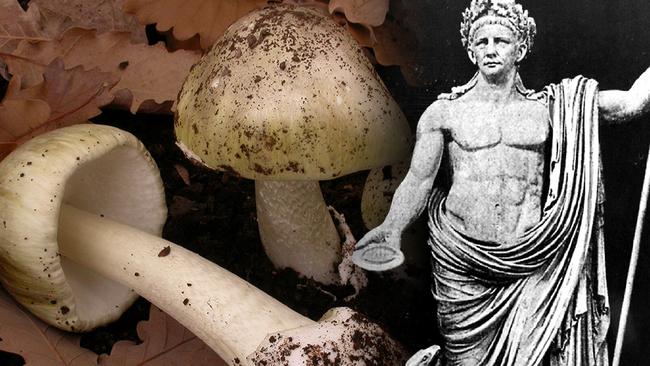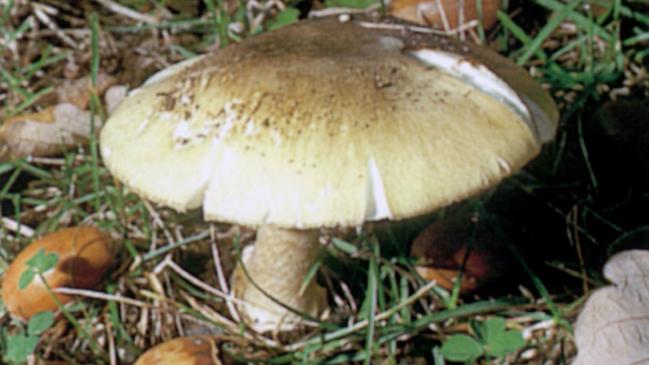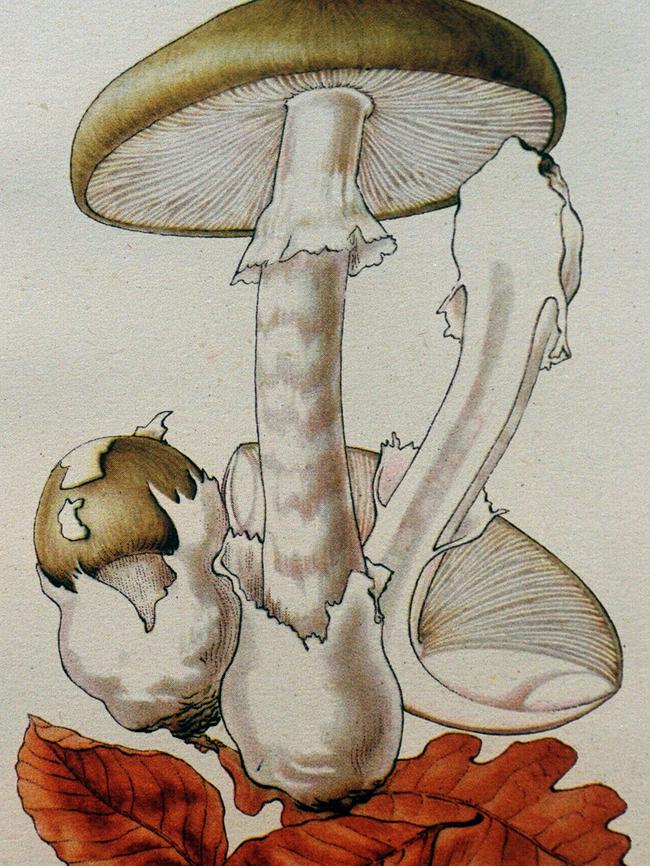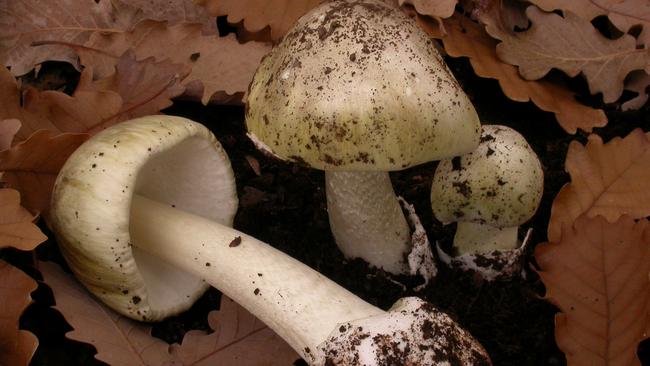Latest twist in deadly Leongatha mushroom lunch
New information shows just how unlucky the three people killed by eating a deadly dish served up by Erin Patterson really were.

News
Don't miss out on the headlines from News. Followed categories will be added to My News.
Victorian poisons data reveals up to 400 people become ill from eating toxic mushrooms each year in the state, but deaths like those from the Leongatha lunch are extremely rare.
There is also an antidote for death cap mushroom poisoning on the horizon.
In information prepared exclusively for the Herald Sun, the Victorian Poisons Information Centre (VPIC) said it received “in the region of 300 to 400 inquiries about mushrooms every year”.
However, the majority of people who reported to VPIC after becoming sick from eating poison mushrooms had relatively mild symptoms, a Austin Hospital spokeswoman said.
“Cases of severe mushroom toxicity notified to VPIC are unusual — typically less than five cases per year,” she said. “Deaths are rare.”
The VPIC is operated out of Melbourne’s Austin Hospital, where one of the victims of the Leongatha mushroom death lunch, Korumburra Baptist Church pastor Ian Wilkinson, remains critically ill and awaiting a liver transplant.
Former in-laws of Erin Patterson, who hosted the July 29 lunch, Gail and Don Patterson, and Gail’s sister Heather Wilkinson, all died after ingesting what was believed to be death cap mushrooms — possibly in a beef wellington pot pie.
It was originally thought that four people were admitted to hospital following the lunch, but local newspaper the Southern Gippsland Sentinel-Times reported that a fifth person was also discharged, after a short presentation at the Leongatha Hospital, on Sunday, July 30.
Aside from the four lunch guests, the only other adult at the lunch was Ms Patterson.
It’s been reported Erin Patterson’s ex-husband, Simon, was also invited to the lunch but pulled out at the last minute.
It raises questions about why Ms Patterson went to hospital, if she wasn’t seriously unwell like her guests.
But while death cap mushrooms have killed few in Victoria, in other parts of the world they have claimed many lives through history.
Britain’s Woodland Trust calls the death cap “the silent assassin and killer of kings”, used as a “murder weapon for millennia”.
But the toxic fungi has also killed foragers around the world after being mistaken for a safe edible mushroom.
It’s been estimated death caps are responsible for about 10,000 illnesses and 100 deaths a year globally — mostly in China.
Fortunately, a team of Australian and Chinese scientists believe they may soon be able to create an antidote for death cap mushroom poisoning.
Death cap mushrooms — which grow under oak trees mostly in Canberra, Victoria, South Australia and New South Wales — are responsible for about 90 per cent of all mushroom poisonings.

In the correct climate, they can grow under oak and beech trees pretty much anywhere, and in 2016 the deadly marbled death cap mushroom was even found growing in the Denmark region of southwest Western Australia.
Ingesting a death cap — or even part of it — can result in violent gastro systems, followed by liver and kidney failure — and just a small amount of the toxic fungi can cause serious organ damage and death.
But in mid-May this year, a study published in the esteemed journal Nature Communications revealed researchers had potentially found an antidote for its toxins that could, if administered quickly, save lives.
A dye already used in medical procedures can block damage from the mushroom’s alpha-amanitin toxin, and tests on human cells grown in lab dishes and mice have already produced promising results, researchers say.
Tests on mice who were poisoned with the death cap (or Amanita phalloides) toxin revealed the dye reduced liver and kidney damage, and increased survival rates, if given one to four hours after poisoning.

But the antidote needed to be administered less than eight to 12 hours after the toxin was ingested, otherwise its effectiveness was reduced and irreversible organ damage was already likely.
In Australia’s capital of Canberra, four people have died from eating the mushrooms since 2002, while scores have fallen ill and been hospitalised, but there have been fewer cases in other states.
One death cap mushroom contains enough poison to kill an adult, and cooking, peeling or drying the fungi does not make it safe to eat, as all parts are extremely toxic.
In China, nearly 40,000 illnesses and 800 deaths from death caps were recorded between 2010 and 2020.
There have also been many poisonings in the UK — where death caps are prolific — and some in Canada and the US, including in the San Francisco Bay area in late 2016, when 14 people ate poison mushrooms and fell drastically ill, including a child who suffered permanent brain damage.
In Victoria in 2018 alone, there were 226 calls to The Austin Hospital’s poisons hotline about possible mushroom poisoning.
Death cap poisonings in Australia
May 2022 - NSW
Consumption of death cap mushrooms sent 14 people to seek emergency treatment in the state in less than a month, from April 29 to May 19 — nine of whom presented in a single week.
The NSW Poisons Information Centre also received 56 calls regarding mushroom exposures. Of those calls, 37 cases were related to foraging or mushrooms being ingested for recreational purposes.
March and April 2022 — Canberra
Two young children were rushed to hospital — one in March and one in April — after eating deadly mushrooms, suspected to be death caps.
November 2021 — Canberra
Three people presented to emergency departments in the ACT after eating wild mushrooms, suspected to be death caps.
2020 — Victoria
Victoria had a spate of death cap mushroom poisonings, with eight people in hospital at one point. Five ended up in intensive care and one person died.
April 2014 — Canberra
A Woolies store in Dickson was cleared after claims it had sold death cap mushrooms to three people hospitalised after consuming the deadly fungus.
January 2012 — Canberra
Two people died after eating death cap mushrooms at a New Year’s Eve dinner party, with the meal prepared in a Chinese restaurant kitchen. A restaurant staffer reportedly accidentally added death cap mushrooms to a dish after mistaking them for straw mushrooms when picking them in the wild.
Death cap poisonings through history
One of the most poisonous of all known mushrooms, the death cap has been involved in the majority of mushroom poisoning deaths in humans throughout history, possibly killing Roman Emperor Claudius in AD 54 and Holy Roman Emperor Charles VI in 1740.


The death cap is fairly common in most parts of the UK, Ireland and mainland Europe, where it is found in mixed deciduous woods, often in widely spaced groups, and particularly under oak and beech trees.
According to Britain’s Woodland Trust — with only a small amount of the cap needed to kill someone and symptoms not always appearing straight away — the mushrooms have been used “as an invisible murder weapon for millennia”, with the Romans and Ancient Greeks recognising it as a deadly poison.
It is said that Agrippina murdered her husband, Roman Emperor Claudius, by mixing death cap juice with Caesar’s mushrooms (Amanita caesarea). He died of poisoning a few days after the meal.
Voltaire also claimed that Charles VI died by death cap poisoning.
Oddly, rabbits and squirrels don’t appear to be affected by eating death cap mushrooms in the UK, the Woodland Trust says.
What the death cap mushroom looks like
The mushrooms typically grow under oak trees, with the cap 40–160mm in diameter.

The cap ranges in colour from pale yellow to green to olive brown, with its gills (the ridges on the underside of the cap) white and base of the stem revealing a membranous “cup”.
Symptoms of death cap poisoning
Onset of symptoms typically occur more than six hours after ingestion of the mushrooms and
include violent stomach pains, nausea, vomiting and diarrhoea.
Symptoms may subside for one to two days thereafter, giving a false impression of recovery but sadly by that stage the toxins will have already caused serious liver damage.
Death from liver failure can occur many days after ingestion.


